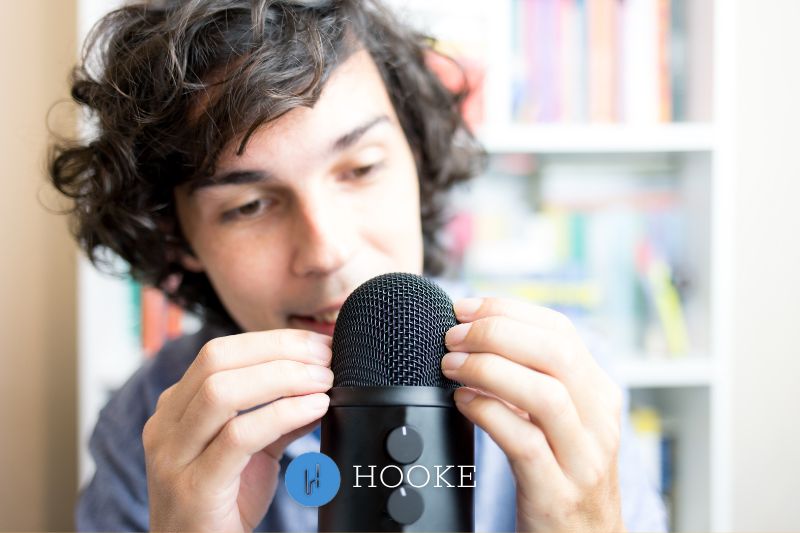AIf you’re new to ASMR, you’re probably wondering about the effects of an Autonomous Sensory Meridian Response. ASMR videos content, in its purest form, is intended to help you relax. Whether you have anxiety or get stressed, you have trouble getting to sleep, or even if you just want to wind down at the end of a long day of work/school – ASMR wants to help.

Contents
Let’s breakdown the ways in which ASMR could be dangerous:
- Loudness: When listening to loud music, one can damage their eardrums and experience hearing loss. Since ASMR is often softly spoken and below 85dB, one can listen to it for an extended period of time without experiencing hearing loss.
- ASMR “Tingles”: ASMR or Autonomous sensory meridian response is a term used for an experience characterized by a static-like or tingling sensation on the skin that typically begins on the scalp and moves down the back of the neck and upper spine. It has been compared with auditory-tactile synesthesia. There has been no evidence or study to prove that this sensation is harmful to the body in any way.
- Cultish or Witchcraft: No. ASMR is neither witchcraft nor new age. It has likely been around for ages but has only recently been given a name. It seems to have some similarities with meditation and some have suggested that it could be a form of euphoria that affects the pleasure centers.
What do Doctors think of ASMR?
According to Jeffrey Junig (MD, PhD Medicine and Healthcare & Neuroscience, School of Medicine and Dentistry at the University of Rochester)
“I doubt that ‘Autonomous sensory meridian response’ is discussed in any medical school or residency lectures, and I would guess that the vast majority of US doctors have never heard of the term. As a doc with training in basic science, I would hope that the medical profession applies the same principles to ASMR as they would to any other treatment— i.e. follow the data. Many non-traditional medical approaches cannot be shown to be effective in clinical trials; proponents of those approaches usually claim that there is something about those approaches that cannot be demonstrated scientifically, and so they shouldn’t have to stand up to the rigors of ‘proof’. That’s nonsense… and should serve as a warning to people spending money on someone practicing in those areas.
Understand that I’m not saying that ASMR is ‘nonsense’. But if it is something that eases tension, improves sexuality, or treats insomnia, the effects should be measurable. If they aren’t, then I question whether the effects exist— or if it is just something that people imagine.”
Though the effects of ASMR can sometimes be questioned, the danger in it is pretty clear: not dangerous. Like listening to rain fall or wind in the trees, ASMR is generated sound designed to relax the mind. Last time we checked, there’s no harm in listening to the rain fall or some one whispering in your ear. If it helps you relax, then use it. But if it doesn’t, you shouldn’t think there is something wrong.
Where did ASMR come from?
Binaural ASMR recordings are quickly becoming the gold standard for ASMRtists. The reason for it is clear for anyone who experiences that tingly ASMR sensation. You can actually feel the difference.
It all started a decade ago with a post to an online forum titled “Weird sensation feels good.” A 21-year-old writing under the handle “okaywhatever” was seeking info on a mysterious sensation that would hit at random-seeming moments ever since he was a kid — “while watching a puppet show….when a friend drew on the palm of my hand with markers…its like in my head and all over my body…I also like to trace my fingers along my skin because it feels good when experiencing the sensation…what is it??”
The overwhelming response perfectly illustrates how the internet enables us to share, compare, codify, and better understand our deepest personal experiences, and thereby find common ground. That weird sensation now has a name we all know: ASMR, or Autonomous Sensory Meridian Response.
And the online community that sprang from okaywhatever’s post celebrated a major milestone a couple weeks ago, when the YouTube personality known as Gentle Whispering became the first “ASMRtist” to hit the one-million subscriber mark.

Want to make your own ASMR content?
First, start with a binaural microphone as they are ideal for ASMR videos. Then follow the steps listed in this helpful guide.
If you have any other questions, please don’t hesitate to ask in the comments below. Thanks for reading!
From One Ear To Another,
Anthony Mattana

